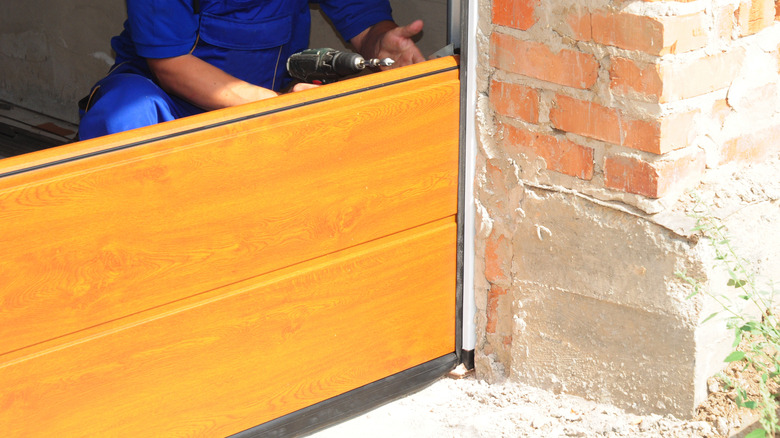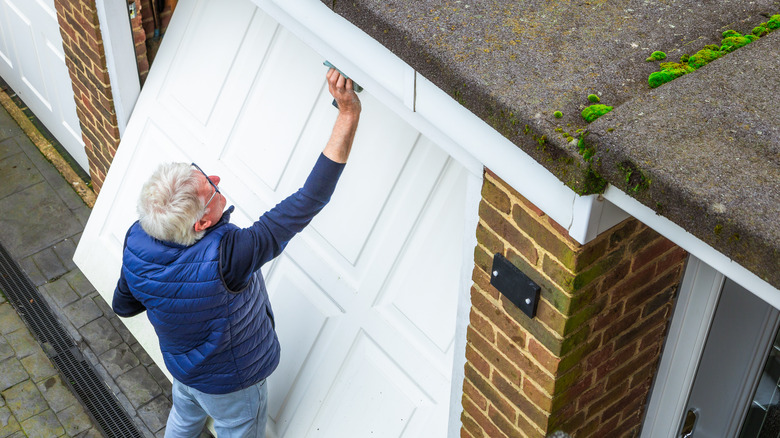Mistakes Everyone Makes When Installing Garage Door Weatherstripping
One of the best ways to weather-seal your garage is by installing weatherstripping. When done correctly, this method can boost your door's ability to keep snow, dust, and even pests out, preventing damage to things you've stored inside. In addition, you can get other benefits like better home insulation, increased energy savings, a longer garage door lifespan, and noise reduction. Unfortunately, however, you might not get all these benefits if your weatherstripping isn't installed right. Common installation mistakes include choosing the wrong materials, measuring incorrectly, not prepping the area, getting impatient, and many more.
Let's start with the first pre-installation mistake some homeowners make. Choosing the wrong weatherstripping can cause gaps, poor sealing, or damage to your garage door. Before picking your weatherstripping material, you have to take note of your garage door type and the climate in your location. Rubber weatherstripping is a popular choice for aluminum and steel garage doors because of its flexibility and easy installation. Vinyl, although not as flexible as rubber, is a good option if you're looking for a very moisture- and mold-resistant material. Metal weatherstripping is quite durable and ideal for wooden garage doors, areas with heavy snowfall, and frequently used doors. Just ensure to go for a rust-resistant metal and always read the manufacturer's instructions before making a decision.
Pre-installation weatherstripping mistakes you could make and how to avoid them
Forgetting to measure the dimensions of the garage door is another common mistake you could make. This mistake can lead to either buying more stripping than you need, which means a waste of money, or cutting it too short and having gaps in your seal. Most weatherstripping comes pre-cut in lengths of 7 to 9 feet long. To avoid wastage, you have to measure the top, bottom, and sides of your garage door. You'll also need this measurement for cutting the strips after you buy, as not all sides have the same length. A tip to make the cutting easier is to use the old weatherstripping to mark the lengths of the new ones.
One other aspect of pre-installation that people tend to mess up is not prepping the garage door frame for weatherstripping. Doing so leaves behind dirt and grime that prevents your weatherstrip from adhering properly to the frame. Always ensure to clean the area after you've removed the old stripping. You can use a scraping tool and/or adhesive remover if the old stripping had an adhesive backing, and don't forget to dry the frame before installing new stripping.
Also, while installing, you need to avoid the mistake of misaligned or poorly fastened weatherstripping. Well-aligned weatherstripping should fit snugly against the doorframe with no gaps while letting the door open and close easily. Follow the manufacturer's instructions to get your stripping's position right. You could use a pencil to mark the edge of the stripping you're replacing, creating a guiding line for the position of the new one.
More mistakes that could affect your weatherstripping's function
One major mistake you really don't want to make is forgetting to install the bottom seal on your garage door. This seal is necessary for protecting your garage from the elements and is also a chemical-free solution to reducing pests in your garage. Also, the strippings on the sides of your doors would not be very effective without an adequate bottom seal. However, you need to be careful before buying, as there are different types of garage door seals available and the wrong one might not fit into your door. Most garage doors come with a bottom seal installed, so you need to make sure you buy a replacement that's similar to the original. You also shouldn't rush the installation process. It's another mistake that causes more harm than good. While you may think you're saving time, you might just be setting yourself up to repeat the process.
Moving on to post-installation mistakes, poor or no inspection at all after the process is a no-go because you can't tell if there are gaps or loose areas in the weatherstripping. What you should do is close the garage door and check to see that the strips and door frame make contact. Make any tweaks necessary before calling it a day. After installation, proper maintenance and routine checks are necessary so you don't need to replace your garage door weather-proofing after a short time.


